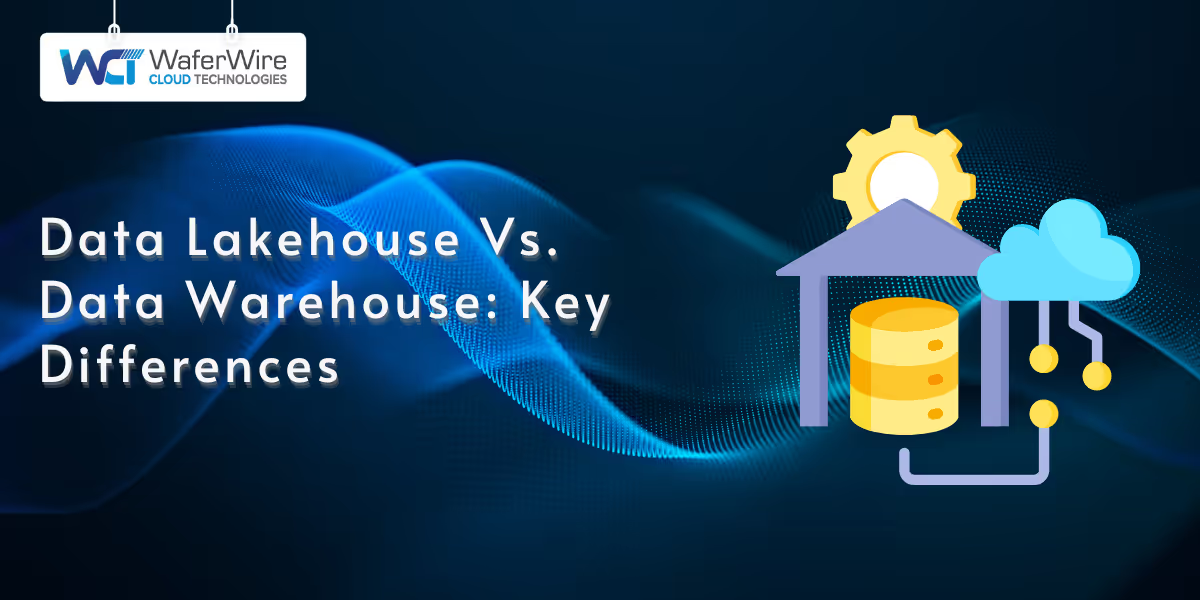

As businesses increasingly rely on data to make informed decisions and stay competitive, the volume of data being generated continues to grow at an unprecedented rate. According to recent studies, global data creation has already surpassed 175 zettabytes. With such vast amounts of data, companies must find efficient ways to store and analyze it to extract valuable insights. The debate over the most optimal storage solution for data analytics, business intelligence (BI), and machine learning (ML) is ongoing.
Data warehouses and data lakes have traditionally dominated big data storage, but a new player is emerging: the data lakehouse. Combining the flexibility of data lakes with the management capabilities of data warehouses, the data lakehouse offers a promising solution for companies with complex data needs.
This blog will explore the key differences between data lakehouses, data warehouses, and data lakes, helping you understand how each storage solution fits into your business’s data strategy.
A data lakehouse combines the best aspects of data lakes and warehouses into a single storage solution. It provides the flexibility of a data lake, capable of storing structured, semi-structured, and unstructured data while integrating the data management features of a data warehouse, such as schema enforcement and data governance. This powerful combination allows businesses to handle diverse data types and workloads efficiently.
The purpose of a data lakehouse is to offer a unified platform that manages large volumes of data and supports complex analytics. Consolidating storage and processing capabilities removes the need for multiple systems, simplifies data management, and enables faster insights. Whether dealing with customer transaction data, social media interactions, or sensor data, a data lakehouse can store it all in one place.
One key advantage of a data lakehouse is its unified storage capability. It accommodates various data types, making it adaptable to a company’s evolving data needs. From raw data collections to cleaned datasets ready for analysis, the lakehouse ensures that everything is stored efficiently and easily accessible. This is particularly valuable for industries like retail, manufacturing, and financial services, where diverse data is generated in large quantities every day.
Now that we’ve explored a data lakehouse’s core features and benefits, let’s examine data warehouses, their role in modern data management, and how they differ from lakehouse architecture.
A data warehouse is a centralized repository designed to store structured data from various sources, making it easier for businesses to conduct complex queries and analytics. Its primary use case is to consolidate large amounts of historical data, enabling organizations to make informed, data-driven decisions. Data from different departments, such as sales, finance, and marketing, is integrated into a single system, providing a unified view for analysis.
Data warehouses optimize structured data for efficient storage and analysis. They organize data in a predefined schema, making it efficient for querying and reporting. Companies use data warehouses to generate business intelligence (BI) insights, create financial reports, and analyze operational performance.
The key role of a data warehouse is in business intelligence and analytics. It supports decision-making by providing historical insights, identifying trends, and forecasting future outcomes. For example, a retail company might use a data warehouse to track sales data over time, enabling them to predict inventory needs and optimize marketing strategies.
A data lake is a centralized repository that stores vast amounts of raw, unstructured, and semi-structured data. Unlike a data warehouse, which organizes data into a predefined structure, a data lake stores data in its native format. The purpose of a data lake is to provide a flexible and scalable solution for capturing all types of data, whether it’s text, images, video, or logs.
Data lakes excel at handling data that doesn’t fit neatly into a structured format. Businesses use them to store and manage large volumes of data from diverse sources, such as IoT sensors, social media, or clickstream data. This flexibility is key when dealing with large or unprocessed data that must be stored for future analysis.
A data lake is particularly useful in scenarios like machine learning and data science, where unstructured or raw data is often required. For instance, machine learning algorithms can benefit from the diverse datasets stored in a data lake, such as customer interaction data or images used for training models. These systems allow businesses to build and fine-tune algorithms without being restricted by the format or type of data.
Let’s compare data lakehouses, data warehouses, and data lakes to better understand their unique advantages and how they can meet different business needs.
Here’s a breakdown of how data lakes, data warehouses, and data lakehouses stack up against each other in structure, performance, cost, and industry use cases.
Category Data LakeData WarehouseData LakehouseData Structure and SchemaIt uses a schema-on-read approach, allowing raw, unstructured, and semi-structured data to be stored in its original format, with structure applied during reading.It uses a schema-on-write approach, where data is structured upon ingestion. This ensures quick access and efficient querying of structured data.Balances both schema-on-read and schema-on-write, offering flexibility to work with unstructured and structured data.Querying and PerformanceProvides flexibility for querying raw data, but this often leads to potential delays due to the need for on-the-fly transformation and analysis.Delivers fast query responses due to structured data, but requires longer data preparation before queries can be made.Optimizes processing speed while supporting both structured and unstructured data, ensuring efficient querying and quick data loading.Cost and Resource ConsiderationsTypically lower cost for storing large amounts of unstructured data. However, managing and ensuring data quality can require significant resources.Higher costs are associated with storage and data processing, and there is a need for more structured infrastructure.Offers a cost-effective solution by combining the scalability of data lakes with the structured processing of data warehouses.Use Cases and Industry AdoptionBest for streaming, machine learning, and data science applications that require handling a wide variety of unstructured data.Ideal for structured data used in business intelligence (BI) applications, where quick, organized access to data is crucial for reporting.It supports diverse workloads and handles structured and unstructured data, making it ideal for businesses requiring flexibility across multiple use cases.
Choosing the right data storage solution is crucial for businesses that aim to manage and analyze their data effectively. Whether you opt for a data lakehouse, data warehouse, or data lake, each offers distinct advantages depending on your organization's specific needs. Choosing a data lakehouse or data warehouse depends on balancing flexibility, speed, and cost. Understanding how each storage system aligns with your business requirements is important.
As technology evolves, advancements in data storage systems will further refine data management capabilities. The rise of hybrid solutions like the data lakehouse ensures businesses can seamlessly integrate structured and unstructured data, driving better insights and decision-making. However, it’s important to recognize the integration and governance considerations, which can differ for each solution and affect long-term scalability.
At WaferWire, we understand the intricacies of choosing and implementing the right data architecture. Our end-to-end services, from strategy and consulting to implementation and support, ensure that your business selects and executes the best-fit solution precisely.
Ready to streamline your data management? Contact us today to discover how we can help you optimize your data storage and analytics systems for maximum business impact.

